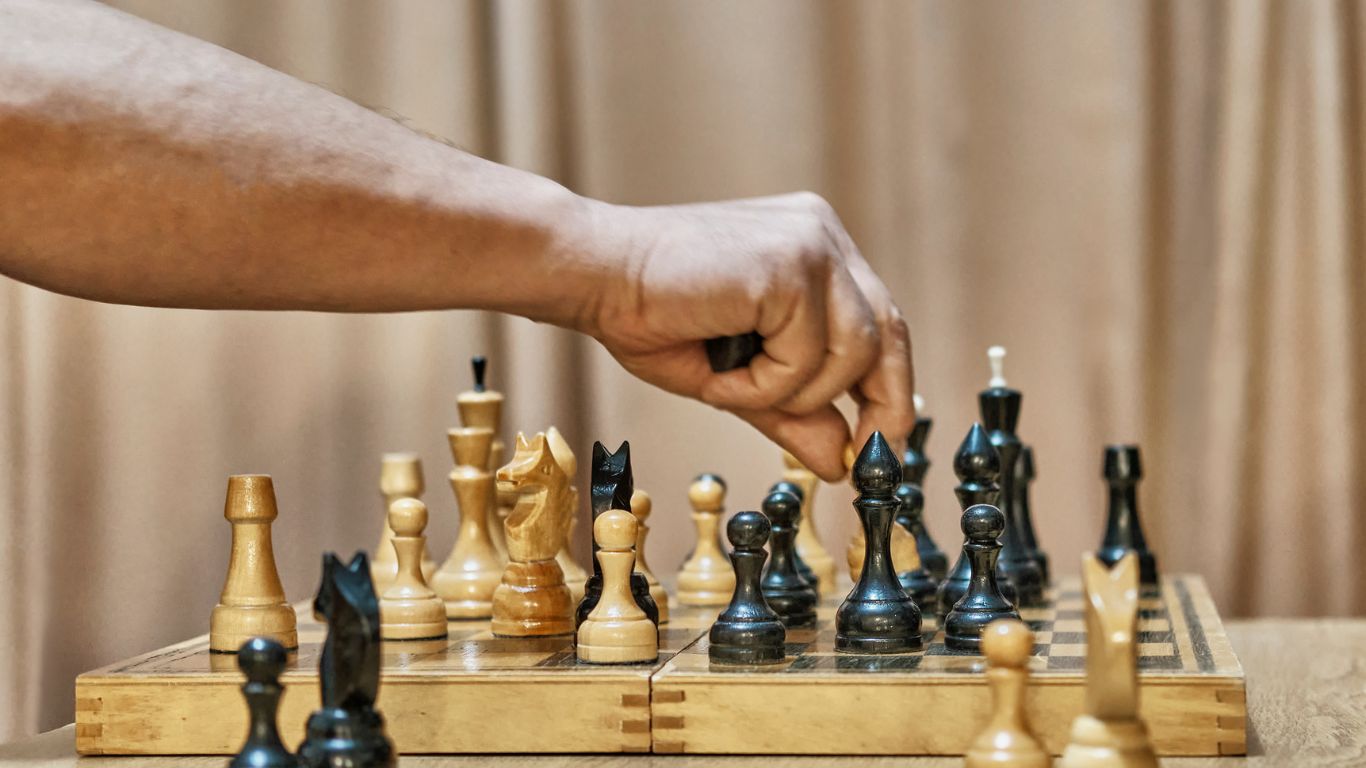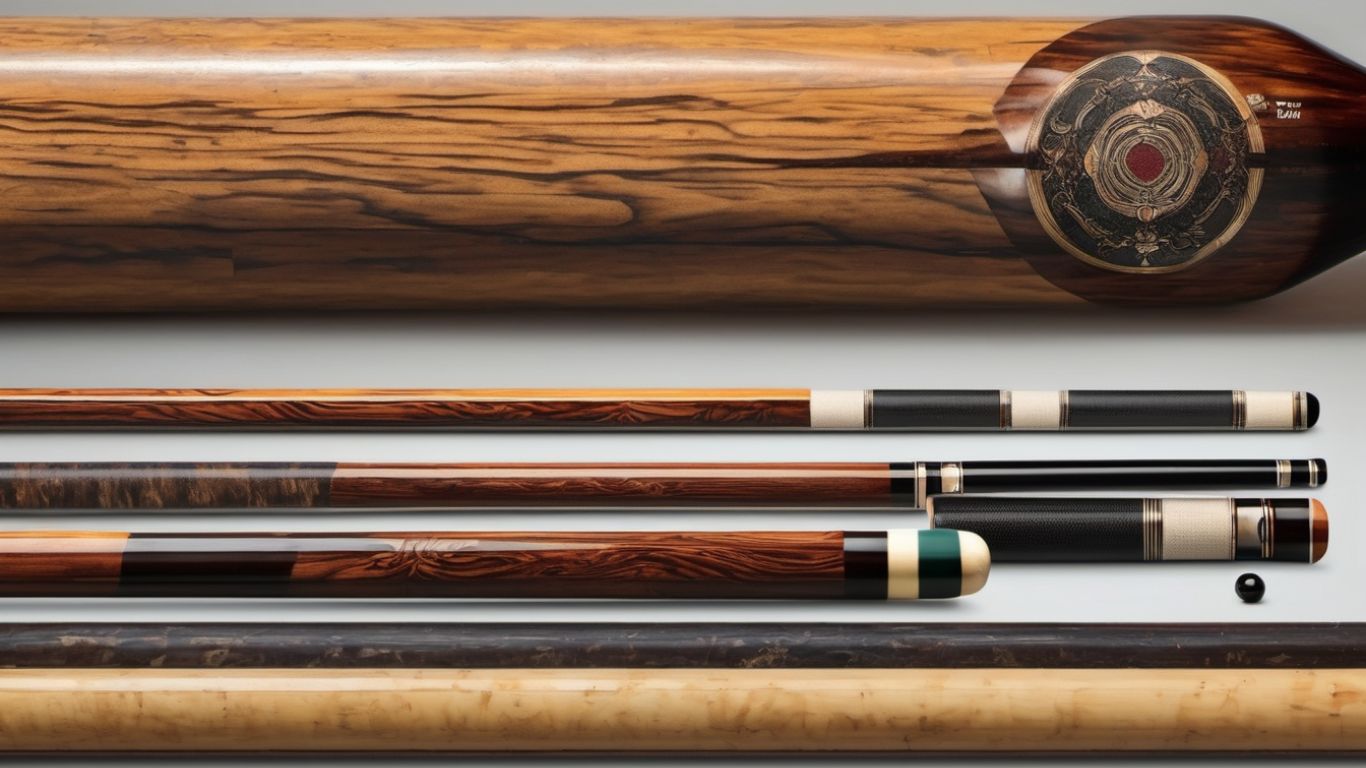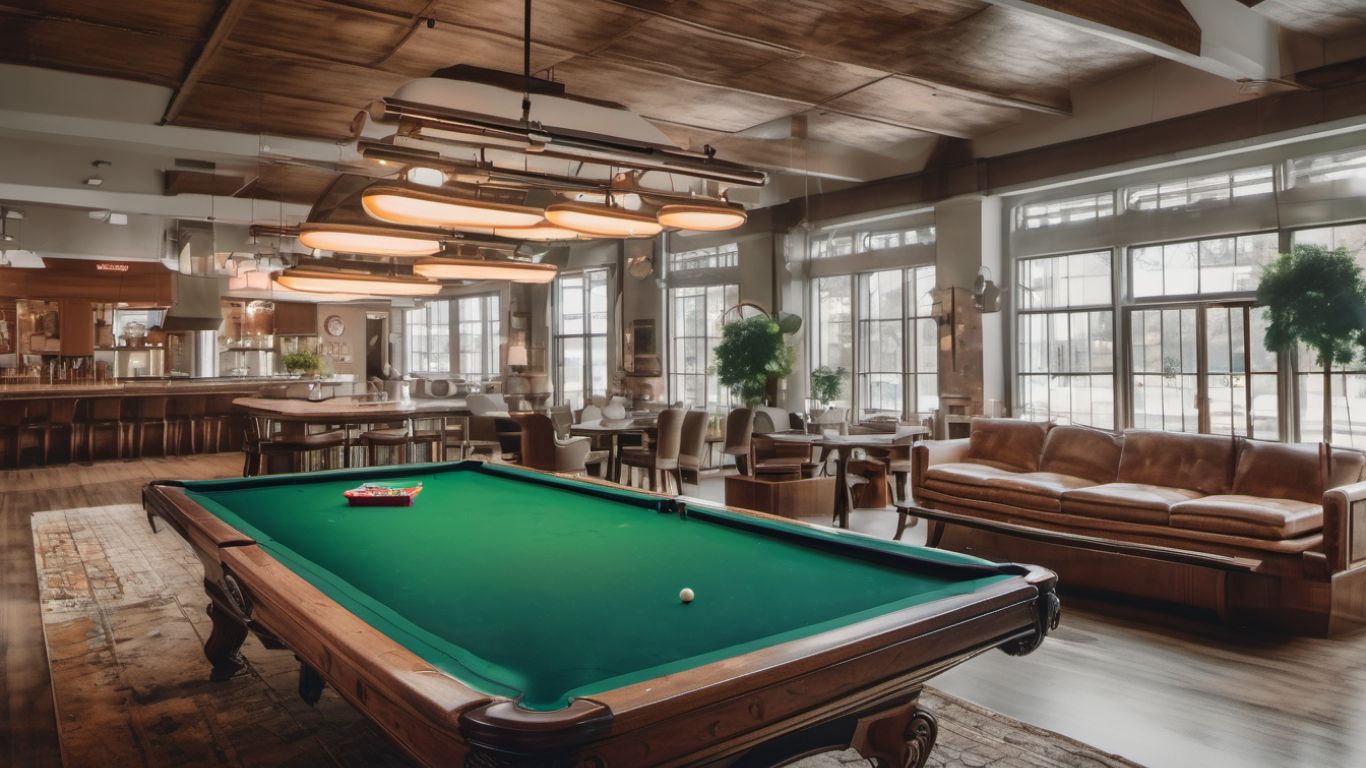Have you ever struggled with setting up a chessboard? Perhaps you’re a beginner, or you just never learned how to arrange the pieces properly. As simple as it may seem, correctly setting up a chessboard can be daunting for many. However, fear not! This article will guide you through quickly setting up a chessboard, ensuring you’re ready to embark on a strategic battle of wits in no time.
Setting up a chessboard may be simple, but it’s crucial to do it correctly for a fair and enjoyable game. Each player’s army consists of 16 pieces, including the king, queen, bishops, knights, rooks, and pawns. The initial setup requires arranging the pieces methodically to ensure balance and proper functioning during gameplay. By following step-by-step instructions, you’ll be able to master the art of setting up a chess board effortlessly, boosting your confidence and allowing you to focus on the exciting world of chess strategies and tactics. So, let’s delve into the process and discover how to set up a chessboard like a true grandmaster!

Credit google.com
Understanding the Chessboard and Its Components
Chess is a game that millions of people worldwide have enjoyed for centuries. It is a game of strategy, skill, and patience, and one of the most important aspects of playing chess is understanding the chessboard and its components. This section will explore everything you need to know about the chessboard and its various elements.
The chessboard is a square board comprising 64 smaller squares of alternating colors. It is typically made of wood or plastic, and each square is uniquely identified by a letter (from a to h) and a number (from 1 to 8). The board is laid out so that the bottom-right corner of the board is a light square. This is important to remember as it helps ensure the board is set up correctly from the beginning.
The chessboard comprises two main components: the ranks and the files. The ranks are the horizontal rows of squares, numbered from 1 to 8, while the files are the vertical columns of squares, identified by the letters a to h. Understanding the ranks and files is crucial, as they provide the basic framework for making moves and understanding the position of each chess piece.
Each square on the chessboard has a unique algebraic notation, combining its file letter and rank number. For example, the square in the bottom-left corner of the board is called a1, while the square in the top-right corner is called h8. This notation system records and describes moves during the game.
Now, let’s dive deeper into the chess pieces themselves. Each player starts with 16 pieces: one king, one queen, two rooks, two knights, two bishops, and eight pawns. The pieces are set up on the chessboard in a specific arrangement, which is symmetrical for both players. The pawns are placed on the second rank for each player, while the significant pieces (rooks, knights, bishops) are placed on the first rank. The king and queen are placed on the remaining squares, with the queen always starting on a square of her color.
The chess pieces each have their unique characteristics and movements. The king is the most critical piece, and its primary goal is to avoid being captured by the opponent. The queen is the most powerful piece; it can move in any direction, horizontally, vertically, or diagonally. The rooks can move in straight lines, either horizontally or vertically. The knights move in an L-shape, making two squares in one direction and one square in a perpendicular direction. The bishops can move diagonally along the squares of their color. Lastly, the pawns move forward one square at a time but have the option to move two squares on their first move and capture pieces diagonally.
Understanding the setup and movements of each chess piece is essential for mastering the game. By clearly understanding the chessboard and its components, players can navigate the board more effectively, plan their moves strategically, and improve their gameplay.
The chessboard is not just a 64-square grid but the fundamental arena where the chess game unfolds. Familiarizing yourself with the ranks, files, and algebraic notation will provide a solid foundation for understanding the chessboard. Moreover, understanding the characteristics and movements of each chess piece is crucial for successful gameplay. So, take the time to study.

Credit amazon.com
Step-by-Step Guide to Properly Placing the Chess Pieces
Setting up a chessboard might seem daunting for beginners, but with a bit of practice and guidance, anyone can master this art with ease. In this step-by-step guide, we will walk you through placing the chess pieces correctly, ensuring that your board is ready for a thrilling game of chess.
Step 1: Prepare your chess board and pieces
Before placing the chess pieces, ensure you have a standard 8×8 chess board and all 32 chess pieces – 16 for each player. The board should be set up correctly, with the light-colored square in the right corner.
Step 2: Place the rooks on the corners
Place the rooks on the first and last ranks from the left corner. The rook is the tallest piece with a flat top and is easily identifiable. Each player should have one rook placed on the corner squares close to their side of the board. These pieces are the anchors of your chess army.
Step 3: Position the knights next to the rooks
Place the knights, which are horse-like in appearance, inward from the corners. Position the knights next to the rooks, ensuring that each knight occupies a square adjacent to the corner on his or her respective side.
Step 4: Place the bishops alongside the knights
Continuing inward, position the bishops next to the knights. These pieces have pointy tops. Each bishop should occupy a square adjacent to the knight on his or her respective side. This way, the bishops create a diagonal line on the board.
Step 5: Set up the queen and king
Now, it’s time to position the most powerful chess pieces: the queen and the king. The queen is the tallest piece with a crown-like appearance, while the king is slightly smaller and wears a crown. Place the queen on the remaining square of her color (on the d-file, the fourth rank, for standard chess) and the king beside her on the same rank.
Step 6: Place the pawns in front of the other pieces
Lastly, you will position the pawns, the smallest and most numerous chess pieces. Each player has eight pawns in a row right before the different chess pieces. Place the pawns on the second and seventh ranks, ensuring each pawn occupies a square in one straight line. This row of pawns acts as a protective barrier for your more valuable pieces.
Step 7: Verify that the board is set up correctly
Once you have placed all the chess pieces, take a moment to verify that your board is set up correctly. Ensure that each piece is appropriately positioned and none are accidentally swapped. Ensure that the kings are placed opposite each other on the same file and that the rest of the pieces align accordingly.
Following this step-by-step guide, you can properly place the chess pieces on the board, ready to engage in a captivating game of strategy and intellect. Remember to double-check your setup before starting a game, as accuracy in placing the pieces is essential for a fair and enjoyable chess match. So, set up your board confidently and get ready to unleash your inner chess master!
Tips and Tricks for Efficiently Setting up the Chess Board
Setting up a chess board may seem like a simple task, but doing it efficiently and accurately can significantly improve your overall gaming experience. In this section, we will explore some tips and tricks that will help you master the art of setting up a chessboard with ease.
First and foremost, it is essential to remember that the board should always be positioned correctly. To achieve this, ensure a clear understanding of the square colors. The bottom right square should always be a light color, such as white, ensuring the board’s correct orientation. Placing the board on a flat surface is equally important to provide stability during gameplay, especially when playing with younger opponents or on uneven surfaces.
Once you have the board in the correct position, it’s time to set up the pieces. Place the rooks, or castle pieces, in the corners of the board. Starting from the left-hand corner, the order should be rook, knight, bishop, queen, king, bishop, knight, and rook. This setup is consistent for both players, creating a balanced starting position.
Now, let’s delve into placing each piece on the board. The rooks should sit on the board’s four corners, occupying the squares farthest from each player. The knights, often depicted as horses, stand beside the rooks, occupying the squares immediately next to them. The bishop, identified by its distinctive hat-like shape, is placed beside the knights. Both bishops should be placed on squares of opposite colors, with one bishop on a dark square and the other on a light square.
The placement of the queen and king is crucial. The queen, the most powerful piece, is positioned on its corresponding colored square. For example, if the light square is on the right side of the board, the white queen is placed on the light square. The same principle applies to the black queen, depending on the board’s orientation. Often referred to as the “king of the jungle,” the king is placed next to the queen.
Lastly, we have the pawns. These humble foot soldiers are the first line of defense and attack. Each player has eight pawns arranged in a row in front of their more powerful pieces. From the player’s perspective, the pawns should cover the second row, ready to advance and conquer the opponent’s forces.

Credit chess master
Remember to maintain a clean and organized board as you set up the pieces. The pieces should be centered on their respective squares, avoiding overlap or tilting. Ensuring accuracy during this process will save you from potential frustration and confusion during gameplay.
Once you have efficiently set up the chess board, take a moment to appreciate the beauty of the arrangement. The perfectly positioned pieces await your strategic moves and challenge your tactical thinking. Setting up the board carefully is the first step toward creating an immersive and enjoyable chess experience.
Setting up a chessboard efficiently requires attention to detail and patience. Understanding the correct placement of pieces, arranging them neatly, and ensuring stability on a flat surface are all crucial aspects of this process. By following these tips and tricks, you will master the art of setting up a chessboard with ease, setting the stage for exciting competitions and engaging gameplay. So, take your time, enjoy the process, and get ready to embark on a chess adventure!
Common Mistakes to Avoid when Arranging the Chess Pieces
Setting up a chessboard may seem straightforward, but even the most experienced players can make some common mistakes. These mistakes can lead to confusion during gameplay and even impact your overall strategy. In this section, we will discuss some common mistakes to avoid when arranging chess pieces, helping you master the art of setting up a chessboard with ease.
One common mistake beginners often need to correct is placing the pieces in the wrong positions. Each chess piece has a designated starting position, and it is crucial to arrange them correctly. The back row is known as the first rank and should consist of a rook, knight, bishop, queen, king, bishop, knight, and rook. Placing these pieces in the wrong order can make it difficult to execute your opening moves and even leave your king vulnerable to early attacks.
Another mistake to avoid is the improper placement of the pawns. Pawns should be arranged on the second rank, the row directly before the significant pieces. They serve as the front line of defense and can help protect your more valuable pieces. Placing pawns too far forward or backward can leave substantial gaps in your defense, making it easier for your opponent to exploit those weaknesses and gain an advantage.
Proper orientation is also essential when setting up the chess pieces. When positioned correctly, the queen should always be on her color. This means the white queen should be placed on a white square and the black queen on a black square. Placing the queens in the wrong colors looks odd and can be confusing during gameplay, possibly leading to inefficient move choices.
Another crucial aspect to consider is maintaining a balanced layout. The pieces should be evenly distributed across the board, both vertically and horizontally. Placing too many pieces on one side can leave the other vulnerable, making it easier for your opponent to attack. It is also important to ensure the bishops are placed on squares of opposite colors. This helps to create a balanced board and ensures that each bishop has access to a wide range of diagonals.
One commonly overlooked mistake is having the wrong perspective. The board should always be set up with a clear view of both players. This means the letters and numbers on the sides of the board should be oriented correctly from each player’s perspective. Placing the board in the right direction can lead to clarity, as it disrupts the game flow and makes it harder for both players to understand the current position.

Credit Grand master
Finally, it is crucial to double-check your setup before starting a game. Even the most experienced players can occasionally make mistakes, so it is always wise to take a moment to ensure that everything is in its proper place. This simple step can save you from any unforeseen complications during the game.
By avoiding these common mistakes when arranging the chess pieces, you can start each game with confidence and a solid foundation. Remember the importance of proper orientation, maintaining a balanced layout, and correctly placing each piece to avoid confusion during gameplay. Mastering this crucial aspect will enhance your playing experience and improve your overall strategy and performance on the chessboard.
Enhancing Your Chess Experience: Personalize Your ChessBoard
Chess is not just a game but a battle of wits, strategy, and intellect. Why not elevate your experience by personalizing your chess board as you indulge in the fascinating chess world? Adding unique elements to your chess set enhances its visual appeal and reflects your personality and style. In this section, we will explore various ways to personalize your chess board and make it your own.
One of the simplest ways to personalize your chess board is by selecting one that resonates with your aesthetic preferences. Chess boards are available in various materials, such as wood, glass, or marble, and in different colors and designs. Whether you prefer a classic wooden board or a modern glass one, choose one that captivates and inspires you. Consider the ambiance you wish to create while playing, and select a board that complements your taste.
Another way to personalize your chess board is by acquiring unique and eye-catching chess pieces. Traditionally, chess pieces come in the classic Staunton design, but you can explore alternatives that match your personality. Chess pieces can vary in size, material, and design, allowing you to select ones that resonate with you. The options are endless, from intricately carved wooden pieces to bold and modern metallic ones. Choose chess pieces that make a statement and add a touch of uniqueness to your gameplay.
Personalizing your chess board can also extend to the accessories you use during gameplay. Consider acquiring a chess clock to add a sense of urgency and excitement to your matches. Chess clocks come in various styles, from traditional analog to sleek digital versions. Find one that fits your style and enhances your overall chess experience. Investing in a high-quality chess set bag or box to store your chess set will protect it and allow you to transport and showcase it with ease.
Beyond visual enhancements, personalization can also be achieved by incorporating your unique touch into your chess board. You may carve your initials, a personal emblem, or a meaningful symbol onto the board’s surface. This adds a personal touch and makes your chess set genuinely one-of-a-kind. Alternatively, explore the world of chess-themed artwork and find a decorative chessboard that reflects your interests or passions. Whether you are a lover of nature, history, or abstract art, there are many artistic chess boards available for you to choose from.
Personalizing your chess board is about expressing yourself and enhancing your overall chess experience. Experiment with different combinations of boards, pieces, accessories, and personal touches until you find the perfect fit. Embrace the creative aspect of chess and let your personality shine through your personalized chess set.
So, as you set up your chess board, take the time to curate a chess set that engages your mind and pleases your eyes. With a personalized chess board, your every move expresses who you are as a player. Enjoy the process of exploring various options and find joy in personalizing your chess board to create an experience that is uniquely yours.
Frequently Asked Questions
1. How do I differentiate between the black and white squares on a chessboard?
A standard chessboard consists of 64 squares, alternately colored in light and dark shades. Remember that the square in the bottom right-hand corner of the board should always be light-colored to differentiate between the black and white squares. The square immediately to the left should be dark-colored, followed by a light-colored square, and so on, alternating between light and dark until the entire board is complete.
2. Which way should the chessboard be oriented?
When setting up the chessboard, always ensure the bottom-right square is light-colored. This provides the proper orientation of the board for both you and your opponent. The chessboard should be placed between players so the light-colored square is in each player’s right-hand corner.
3. How do I place the chess pieces correctly on the board?
The arrangement of chess pieces is consistent for both players. Starting from the closest row to the players, we have, from left to right, rook, knight, bishop, queen (on her corresponding color), king, bishop, knight, and rook. You should place eight pawns in the row in front of these pieces, one in front of each piece. Ensure the row closest to each player is set up correctly before moving on to the following pieces.
4. How do I correctly place the king and queen on the board?
To correctly set up the chessboard, the queen should be placed on the square matching her color. For example, the white queen is placed on a light square (d1 for white), while the black queen goes to a dark square (d8 for black). Similarly, the king is placed on the remaining square of the same color (e.g., e1 for white and e8 for black).
5. Can I place the chess pieces in any arrangement I prefer?
No, the arrangement of the chess pieces is standardized and must be followed for fair play. Changing the placement may create confusion, especially when playing with different opponents or participating in chess tournaments. Sticking to the official arrangement ensures consistency and helps maintain a level playing field for competitive game settings.
6. How far apart should I place the pieces?
When setting up the chessboard, you should ensure the pieces are correctly placed within their respective squares and not overlapping. They should be positioned in a way that makes it easy to distinguish between each piece and their legal movements during the game. Take care not to position the pieces too close to each other, as this could lead to accidental moves or improper capturing.
Conclusion
Learning how to set up a chessboard with ease is a valuable skill that enhances your overall chess experience and boosts your confidence. Through this article, we have covered the basics of setting up the board, from the appropriate placement of the pieces to understanding their positions. You can start every game precisely and efficiently by following these simple steps. Remember, practice makes perfect, so don’t be discouraged if it takes a few tries to get it right. With time and dedication, you’ll soon master the art of setting up a chessboard effortlessly. So, go ahead and challenge your friends or take on more formidable opponents, knowing you have the knowledge to begin each game on the right foot. Enjoy the journey of chess, and may every move you make be strategic and rewarding!










Lirigzon Gashi